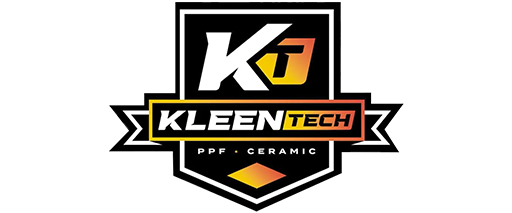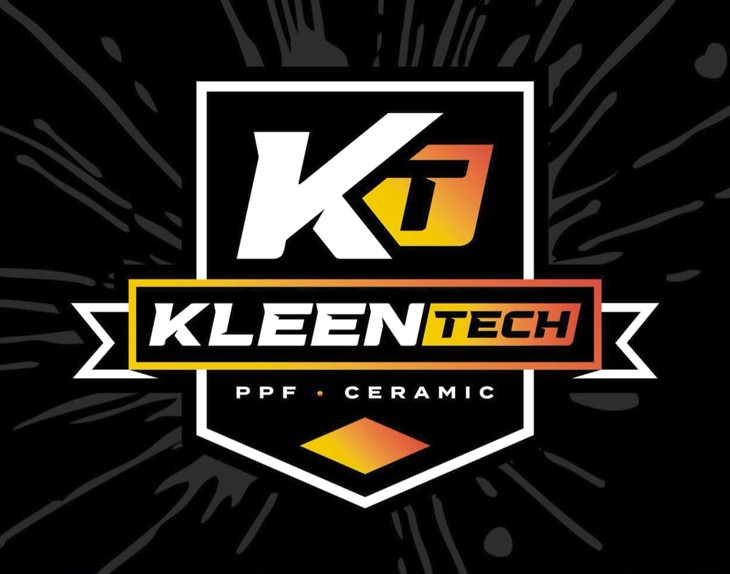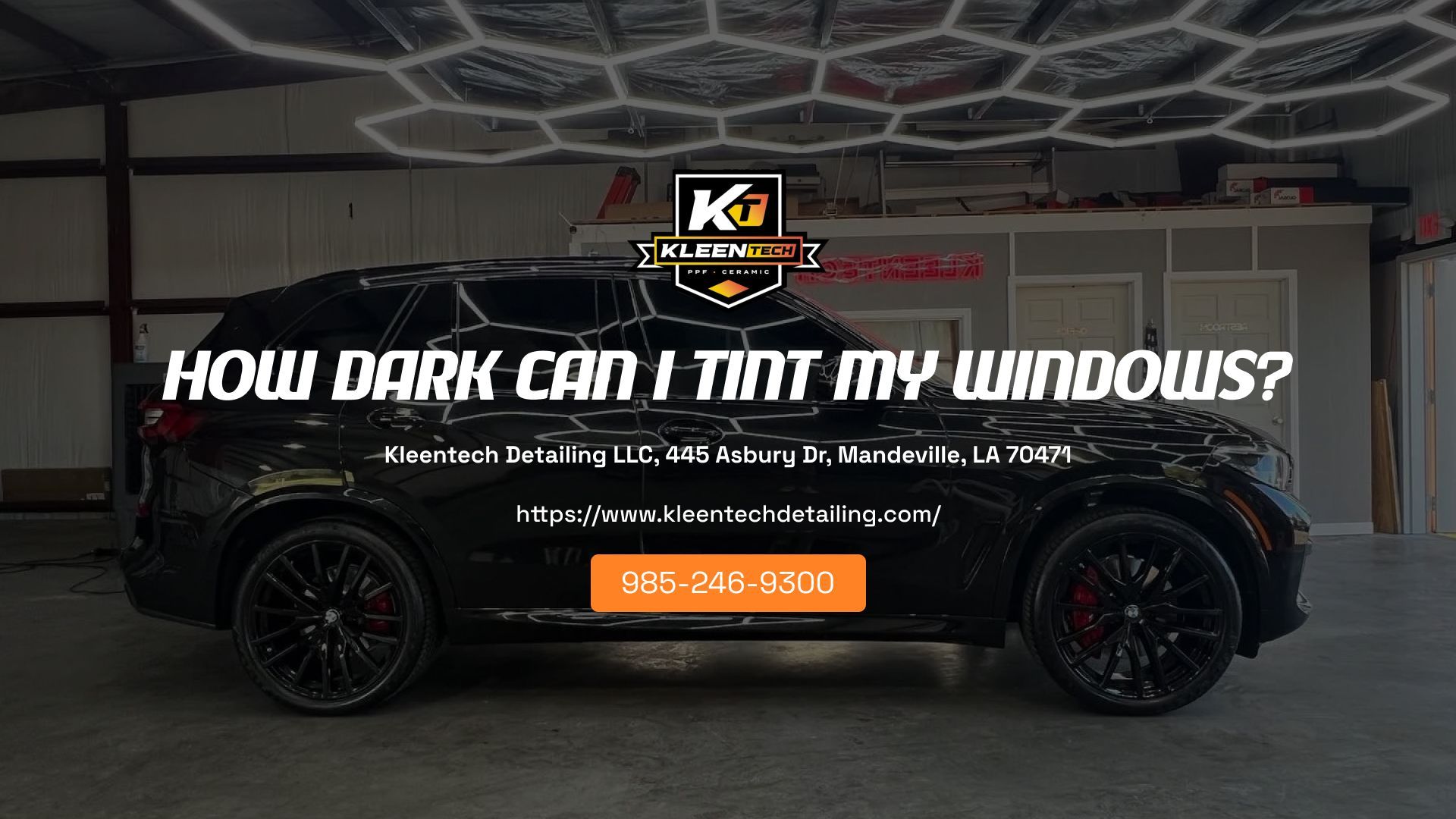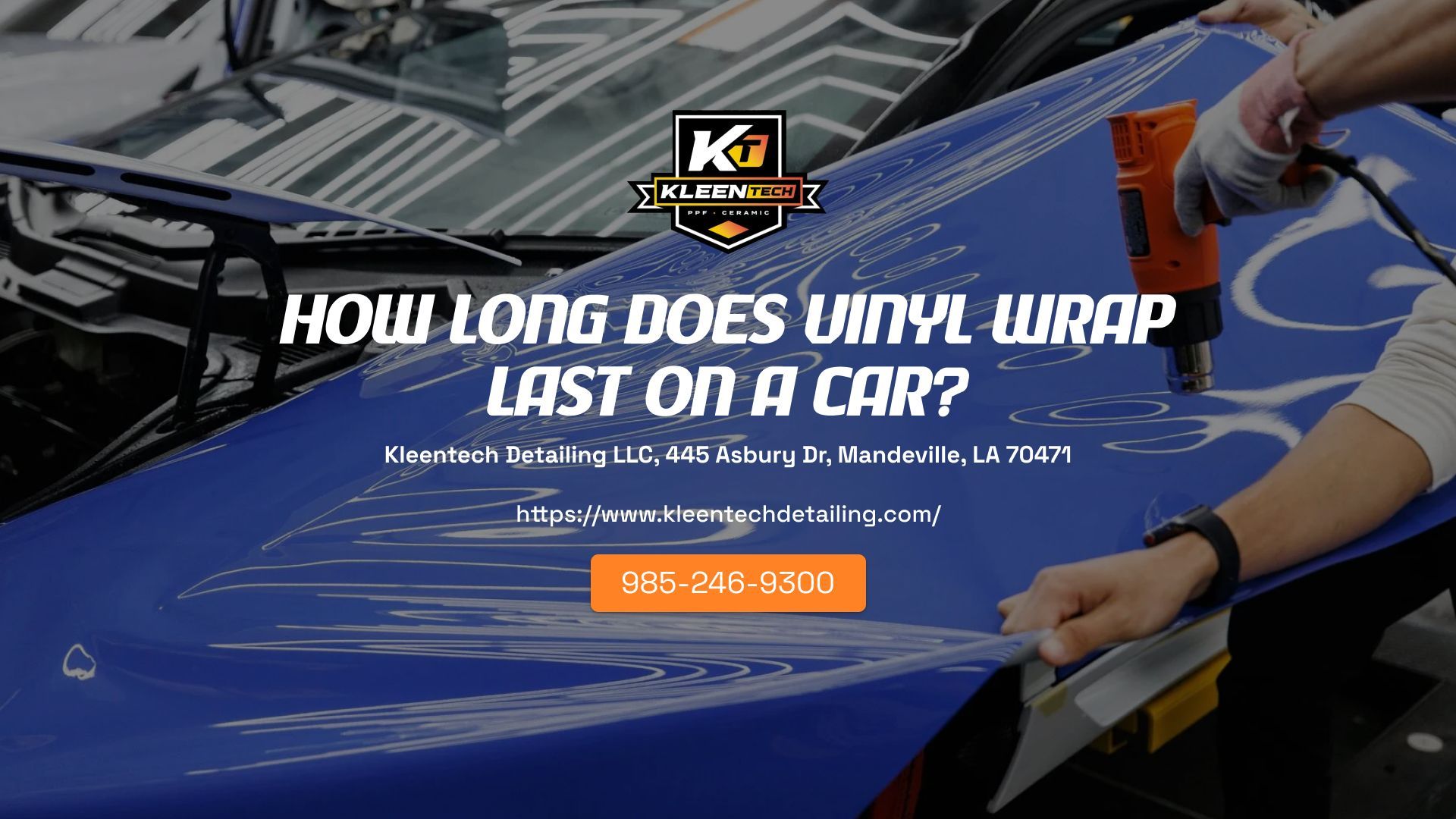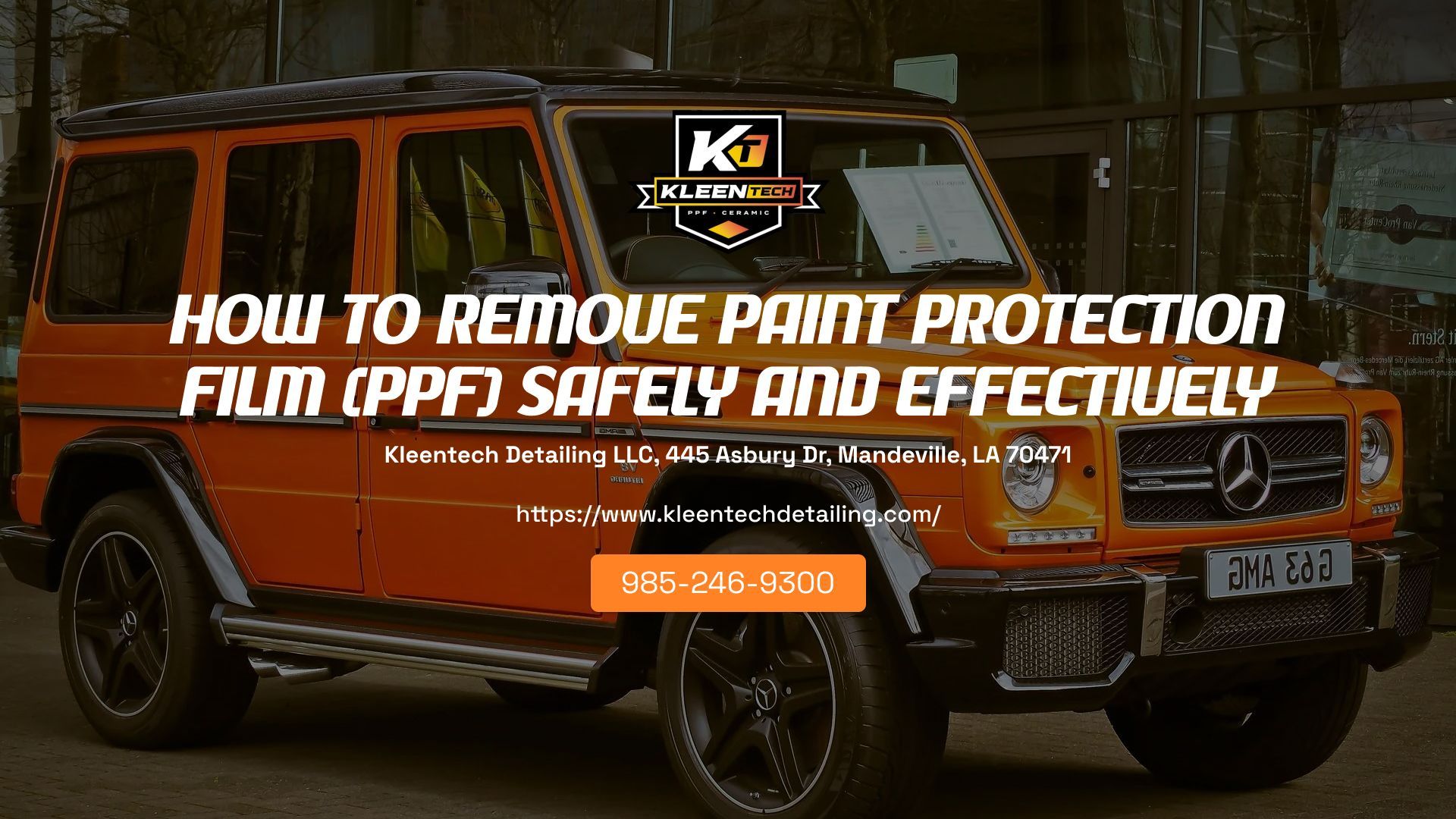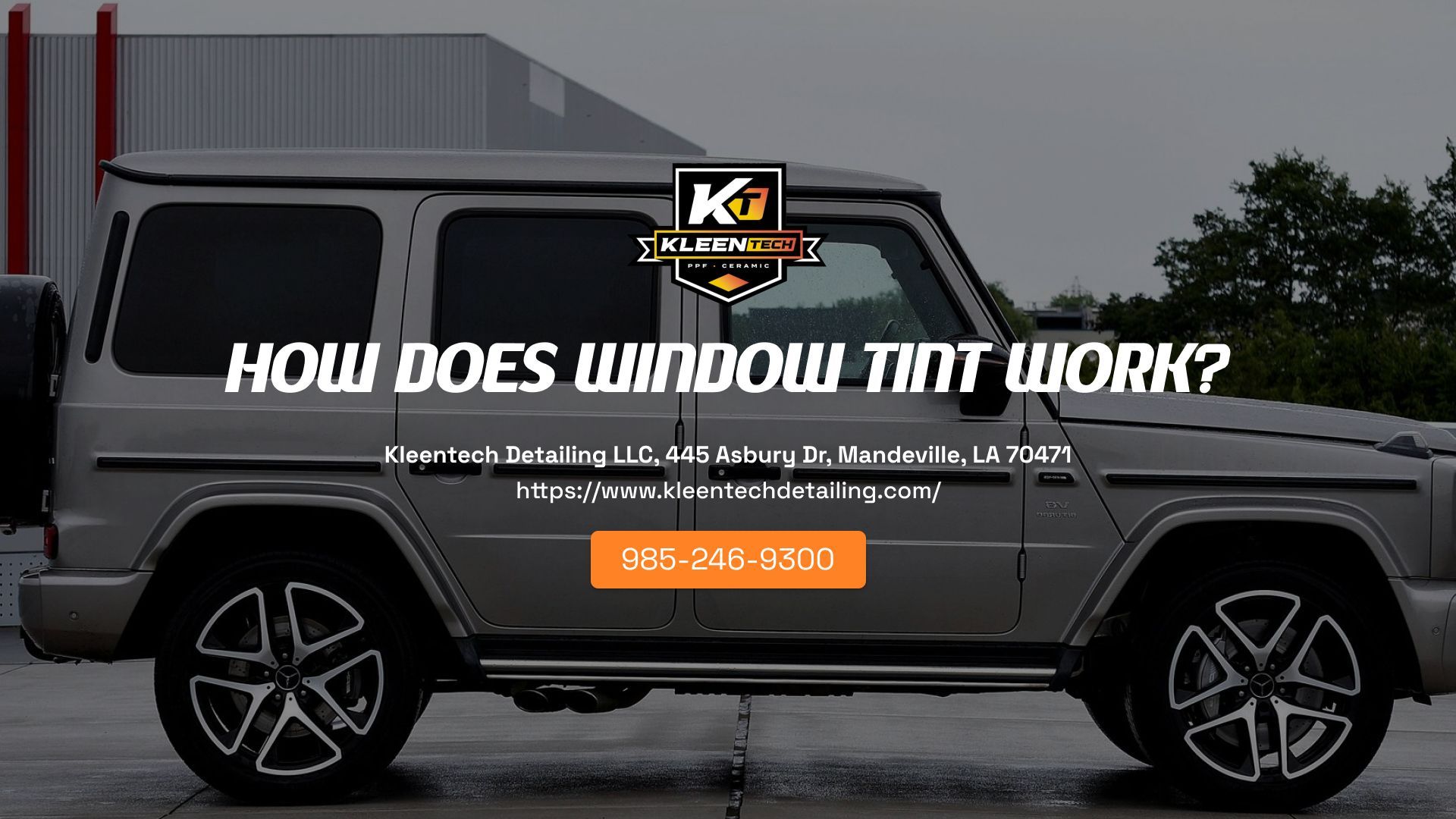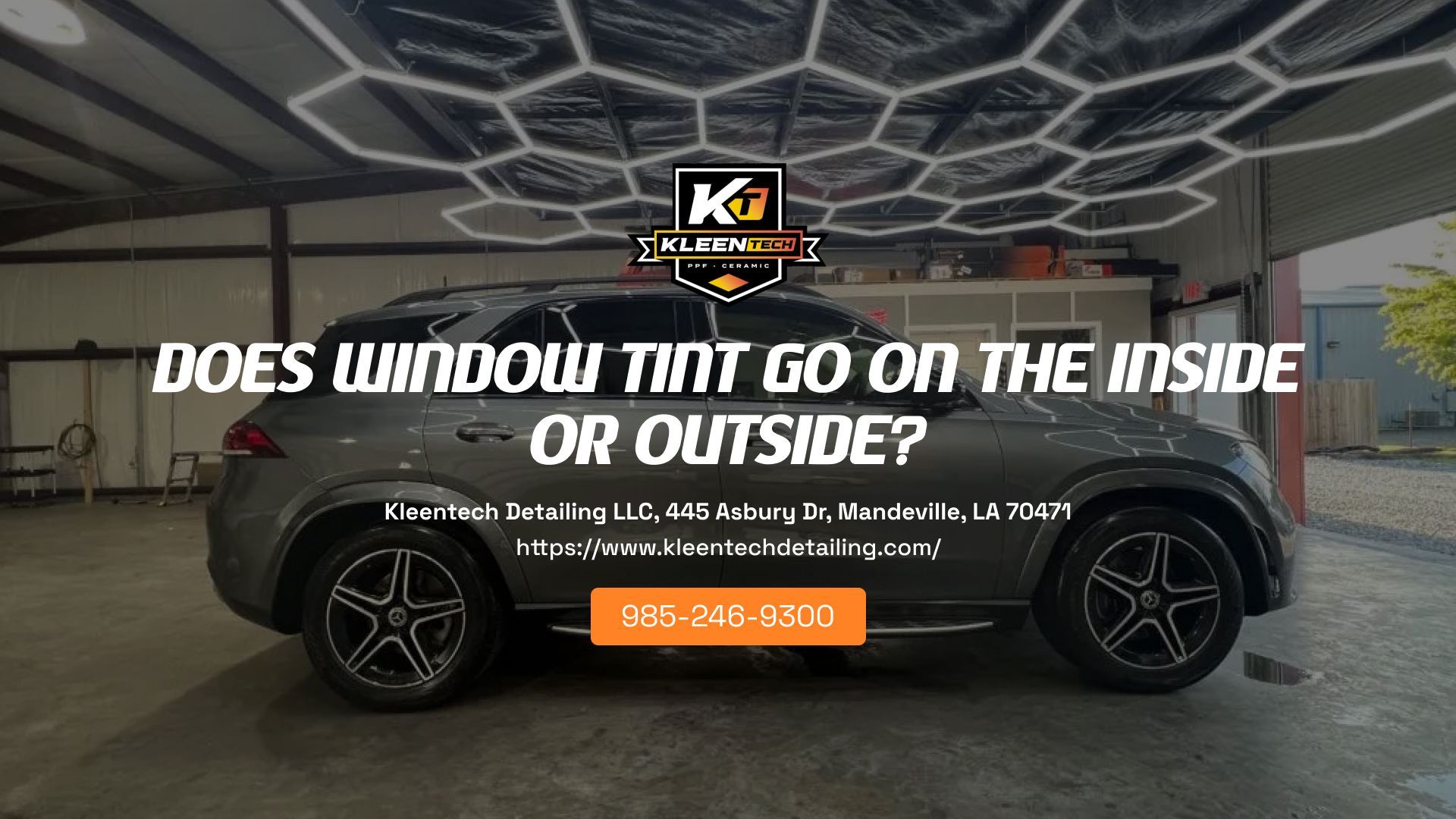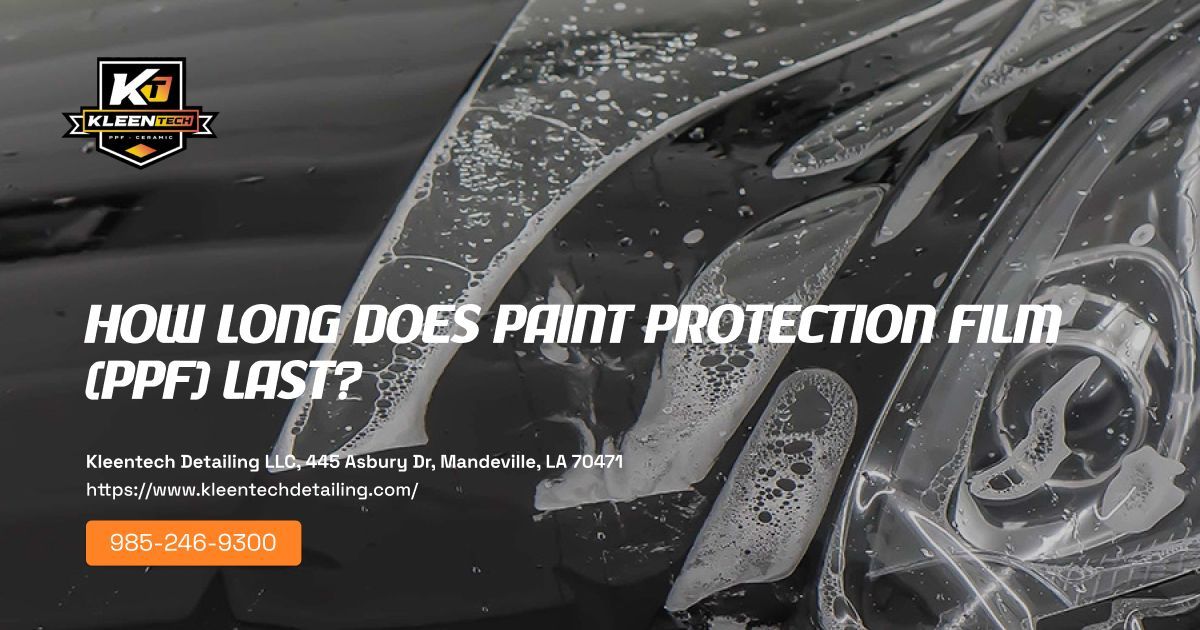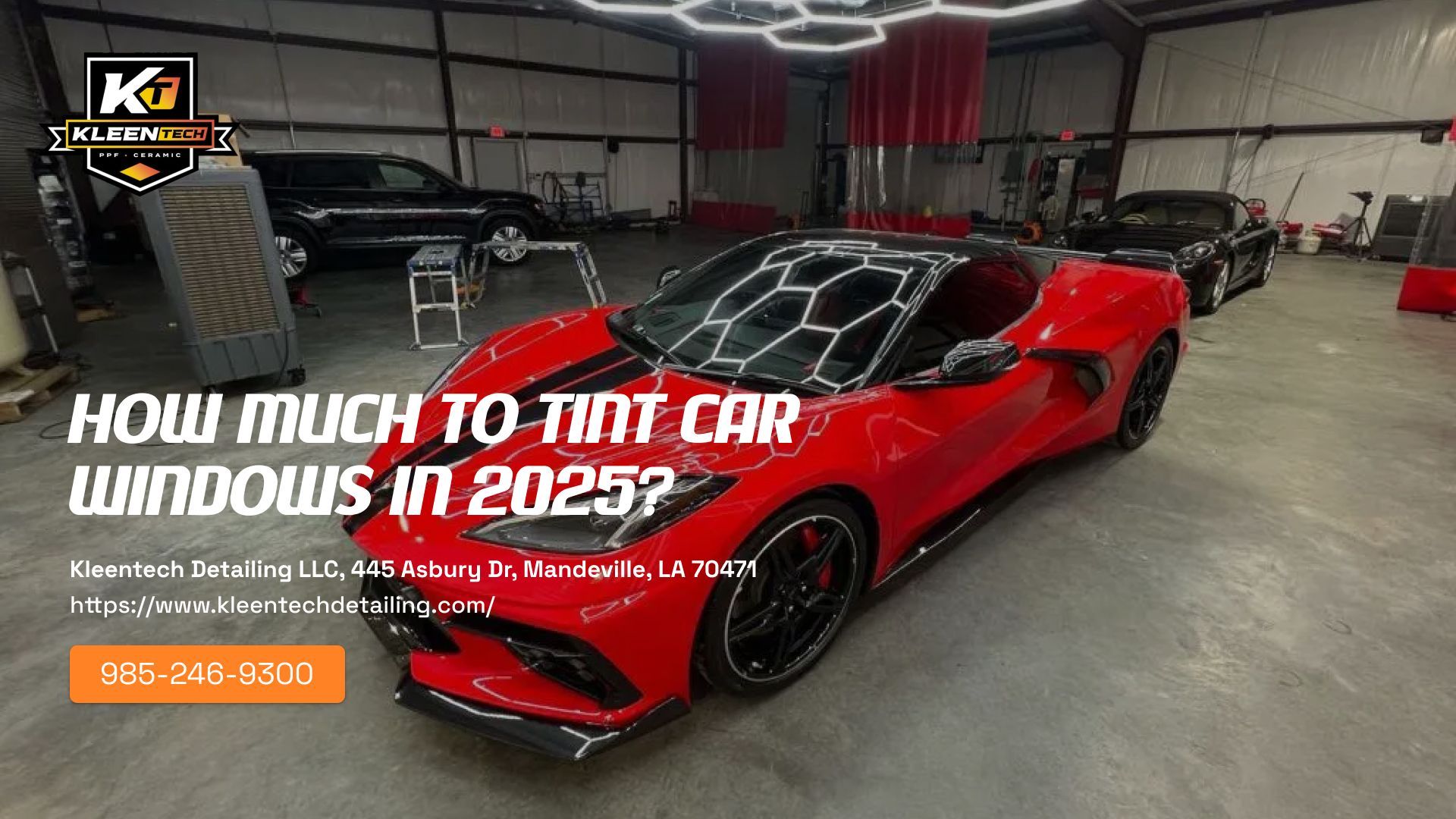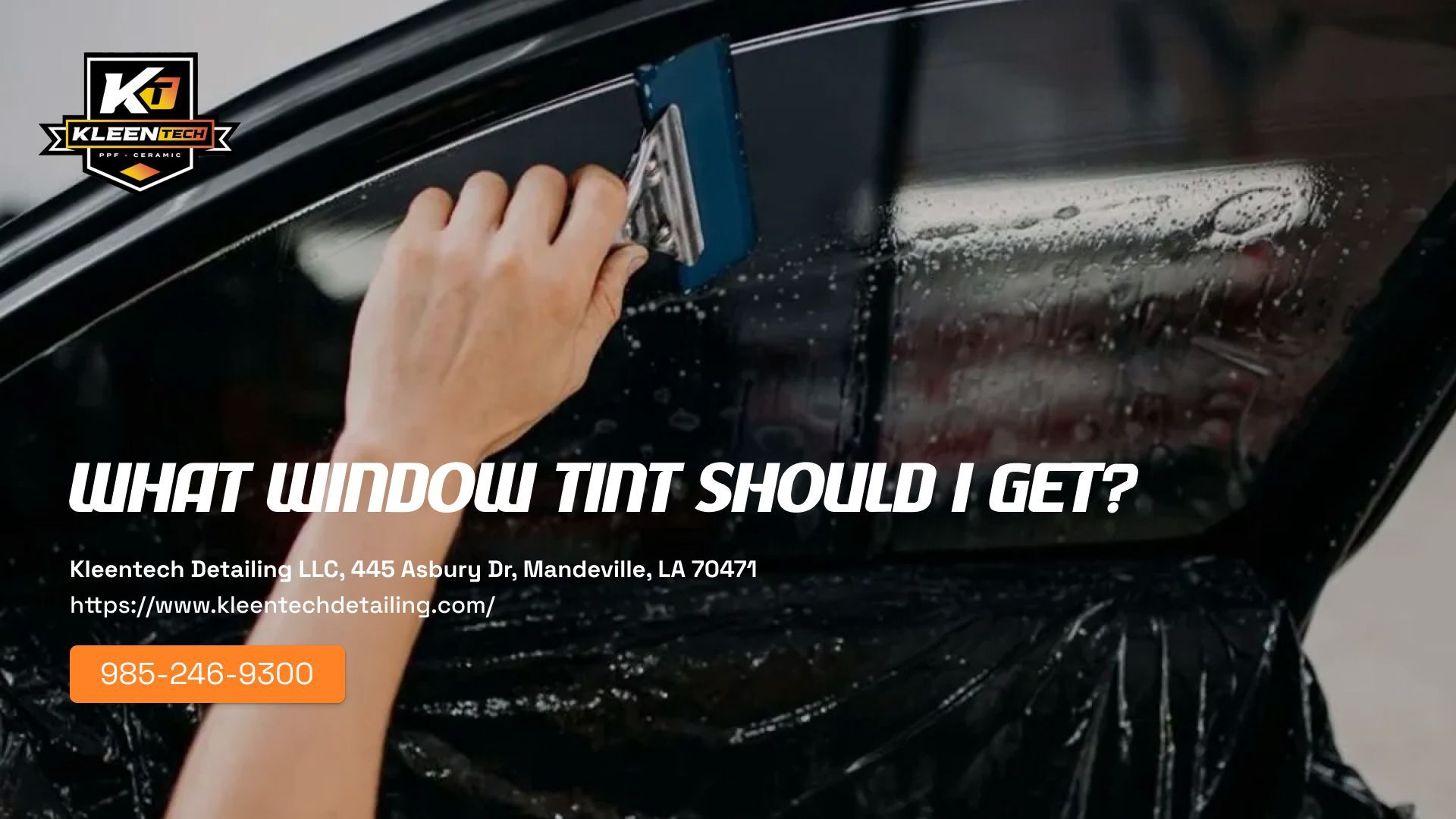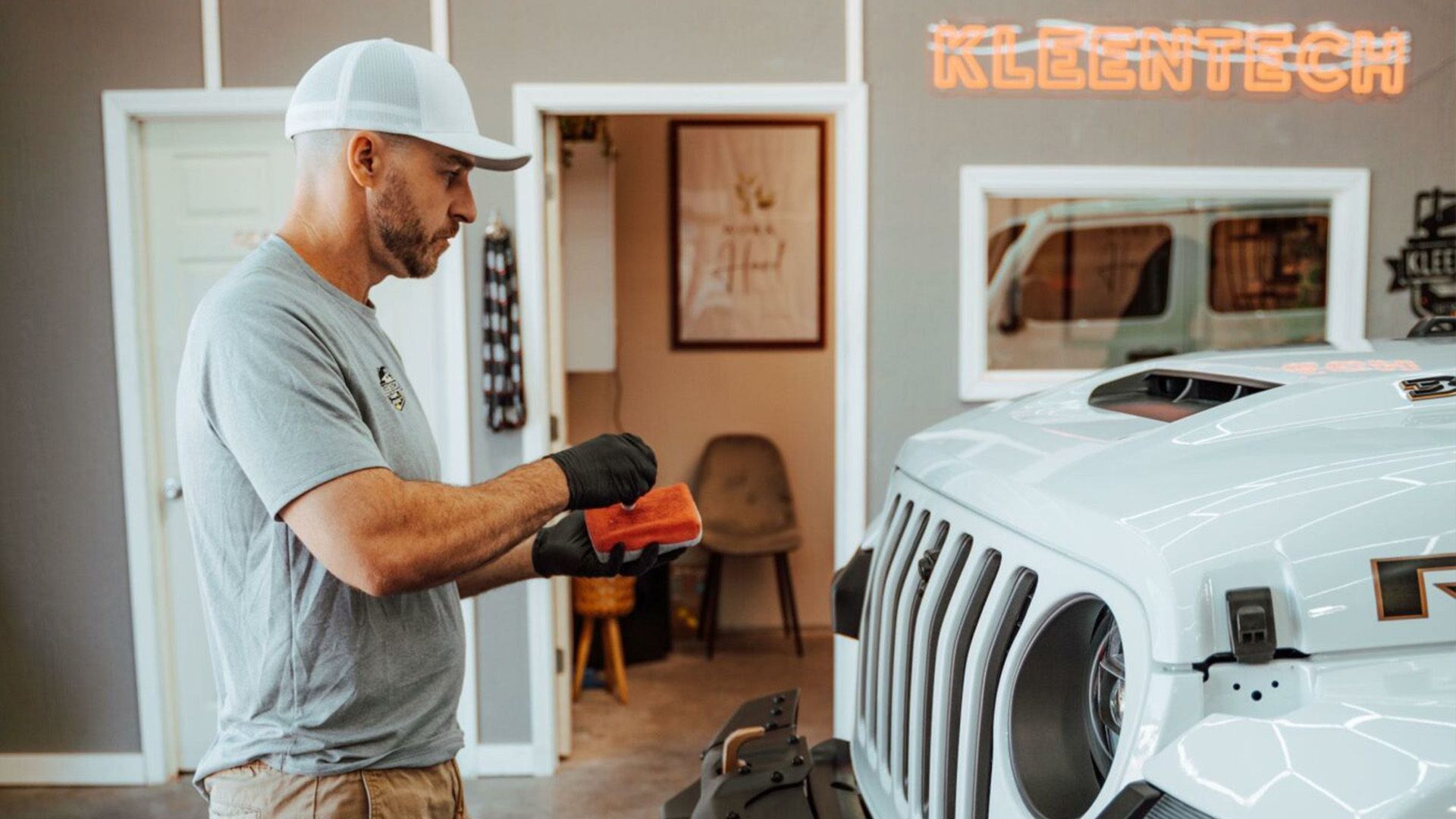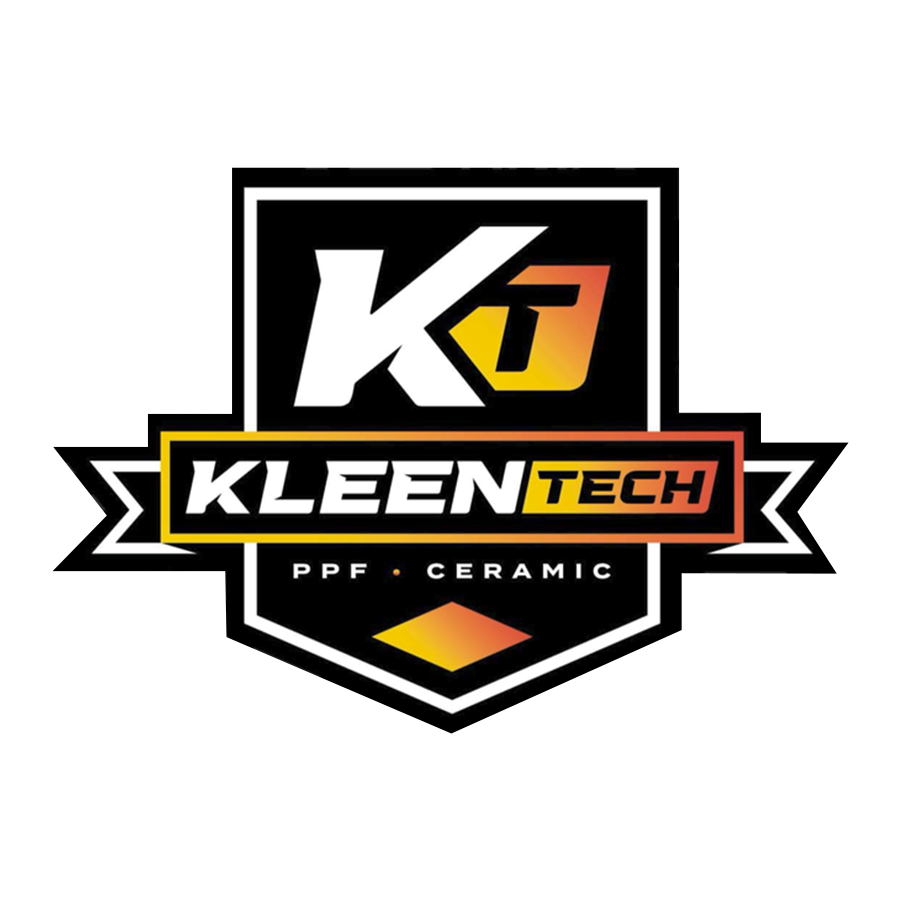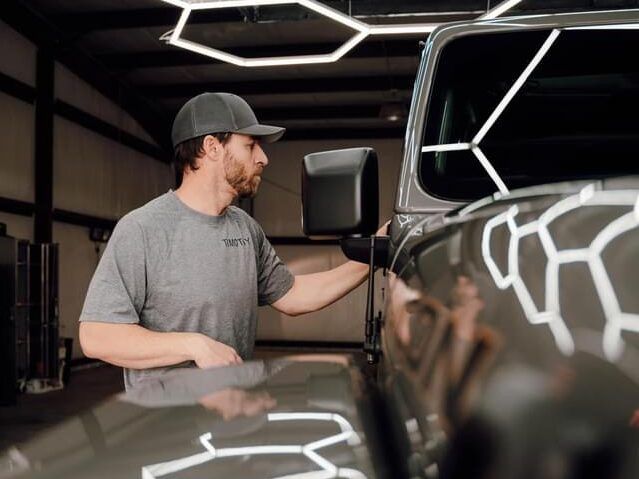Do Tinted Windows Block UV?
Table of Contents
Wondering
do tinted windows block UV
inside your car? Tinted windows can stop 99% of damaging UV rays in your vehicle - if you pick a good-quality window film. Most motorists are amazed when told that standard glass doesn't do much to stop UV rays, while high-quality ceramic and crystalline tints provide virtually complete filtering of UV rays. In this primer, Kleentech Detailing details why auto window tinting saves your skin, keeps your vehicle cooler on the inside, and maintains your vehicle's interior from fading, cracking, and eventual damage.
Key Takeaways
- Quality window tints block up to 99.9% of UV rays and reduce infrared heat for improved cabin comfort.
- Ceramic and crystalline tints outperform factory tint in UV protection and clarity.
- UV window film helps prevent sunburn, fading interiors, and skin damage, especially during long drives.
- Louisiana Tint Law: Front windows must allow at least 40% visible light; rear windows may be darker.
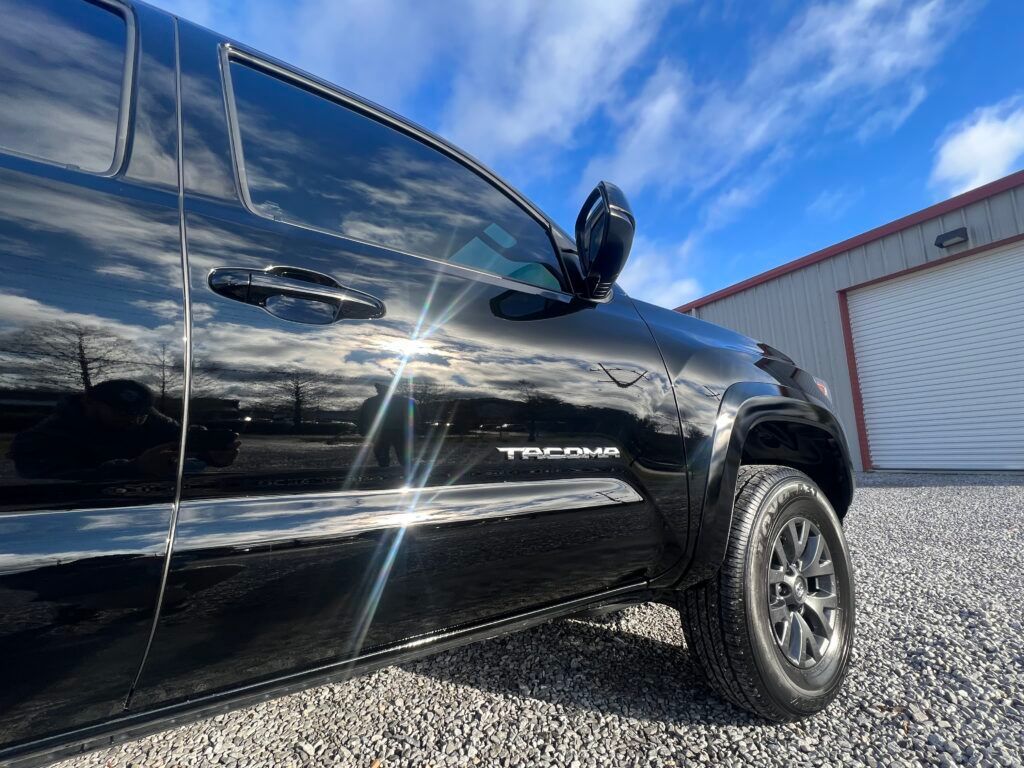
Why UV Protection Inside Your Car Really Matters
Ultraviolet rays pass through standard auto glass and can cause skin aging, sunburns, as well as even skin cancer. According to the Skin Cancer Foundation, over 50% of U.S. skin cancer occurs on the side of the car driver because of untreated exposed windows.
Beyond skin risk, UV radiation also damages interior finishes - passing through cracks in leather seats, darkening dashboards, and stiffening plastics. Without UV-blocking tint, your vehicle is hotter, less comfortable, and less protected.
Can UV Rays Penetrate Glass and Factory Tint?
Yes. Standard factory glass and OEM tint mostly darken glass, but do not block UVA or UVB radiation effectively. Many car owners ask, do tinted windows block UV rays and heat effectively? The answer depends on the material - only ceramic or crystalline films deliver maximum UV and heat rejection.
| Glass Type | UV Protection |
|---|---|
| Standard Windshield | ~60% UV blocked |
| Side Windows (OEM) | ~25–40% UV blocked |
| Ceramic Tint (Aftermarket) | 99.9% UV blocked |
| Crystalline Tint | 99.9% UV blocked |
Solution: Install aftermarket ceramic or carbon window films, which are engineered to reject UV and infrared heat using nanotechnology.
How Window Tint Blocks UV: The Science Simplified
A high-performance automotive tint is a multi-layer film that combines:
- UV Filter Layer – Blocks UVA and UVB radiation.
- Infrared Rejection Layer – Reflects IR heat to keep the cabin cooler.
- Glare Control Layer – Enhances visibility and driving comfort.
- Shatter-Resistant Layer – Strengthens glass during impact.
- Scratch-Resistant Coating – Ensures durability and clarity.
Modern materials like nano-ceramic particles and metalized films optimize these layers for maximum UV rejection without darkening, answering both “does window tint block heat” and “does window tint block UV” - all in one high-performance system.
How Much UV Can Different Tint Types Block?
Different tints offer varying levels of UV and heat reduction:
| Tint Type | UV Blocked | Heat Reduction (IR) | Clarity |
|---|---|---|---|
| Dyed Window Tint | ~90% | Moderate | High |
| Metalized Window Tint | ~95% | High | Medium |
| Hybrid Window Tint | ~95% | High | High |
| Carbon Window Tint | ~97% | Very High | High |
| Ceramic Window Tint | 99%+ | Exceptional | Very High |
| Crystalline Window Tint | 99%+ | Excellent | Crystal Clear |
| UV-Blocking Window Tint / Heat-Rejection Window Tint | 99%+ | Excellent | Variable |
Note: Light tints may still block nearly all UV rays, even if they appear visually brighter - darkness does not equal better UV protection.
OEM Tint Vs. Aftermarket Film: What’s The Real Difference?
| Type | Purpose | UV Protection |
|---|---|---|
| OEM Tint | Aesthetics & Privacy | Limited (~30–40%) |
| Aftermarket Tint | Health, Heat, & UV Defense | Superior (Up to 99.9%) |
Verdict: If you're serious about UV protection, aftermarket ceramic or crystalline tint is the clear winner.
Benefits Of UV-Blocking Tint For Your Vehicle
Installing heat control film or privacy film brings multiple benefits:
- Reduced interior heat for a cooler cabin.
- Increased privacy without sacrificing visibility.
- Reduced glare for safer driving.
- Protected interiors that resist cracking and fading.
- Enhanced aesthetics and sleek style.
- Improved energy efficiency with less air conditioning use.
- Greater safety thanks to shatter resistance.
These advantages combine interior protection, glare reduction, aesthetic enhancement, and energy efficiency, all contributing to a more comfortable and secure drive.
How Long Does UV Protection From Tint Last?
The lifespan of window tint depends on film type and care:
| Tint Type | Average Lifespan | Durability Features |
|---|---|---|
| Dyed Window Tint | 3–5 years | May fade over time |
| Carbon Window Tint | 5–10 years | Strong and fade-resistant |
| Ceramic Window Tint | 10+ years | Scratch-resistant coating, durable adhesive layer |
As part of regular automotive maintenance services, inspecting your tint helps identify signs of wear like bubbling or discoloration. Modern nano-ceramic tint outperforms traditional tint, maintaining UV protection and appearance for over a decade.
Legal Restrictions: Are UV-Blocking Tints Legal In Your State?
Every region sets limits on VLT (Visible Light Transmission) to ensure safe driving visibility. Most U.S. states require front-side windows to let 35–70% of light pass through, depending on local regulations. Dark or opaque films are often restricted.
For example:
California Tint laws allow 70% on the front and 30% on the rear, while Texas Shield standards permit 25% on front windows. In Mandeville, LA, tint laws follow state guidelines - front side windows must allow at least 40% of light, and rear windows can be darker.
These rules are part of important safety and security features that balance visibility with privacy solutions. Always check your local tint regulations before installation to stay compliant.
Complete UV Protection Strategy (Not Just Tint)
For full sun protection, window tint is just one part of the solution. Combine UV film or solar film with a few simple habits to protect yourself and your car even more effectively:
- Use car shades when parked to block direct sunlight.
- Wear UV-rated clothing to protect your skin during long drives.
- Apply sunscreen on exposed areas, especially your arms and face.
- Choose energy-efficient products like reflective windshield shades to reduce heat buildup.
When you combine these sun protection solutions, you will reduce UV exposure, stay more comfortable on the road.
Book Professional Window Tinting In Mandeville, LA
Ready to protect your skin, your passengers, and your car interior?
Kleentech Detailing provides professional window tint installation in Mandeville, Louisiana, using premium-grade films that deliver maximum UV protection, exceptional heat rejection, and a sleek, lasting finish. Call now or book online to schedule your UV-blocking window tint today.
FAQs About UV And Window Tint
Does 70% / 50% / 5% tint block UV?
Yes, UV blockage is based on the material, not the darkness. Even a 70% VLT film can block 99% of UV rays if it’s ceramic or crystalline.
Can you still get sunburn through tinted windows?
Yes, if your tint is low-quality or old. Standard glass and dyed tint let UVA rays through, which cause skin aging and cancer. Always opt for certified UV-blocking film.
Is ceramic tint worth it for UV protection?
Absolutely. Ceramic tint offers the best balance of clarity, heat rejection, and UV protection, with no signal interference and a lifespan of 10+ years.
